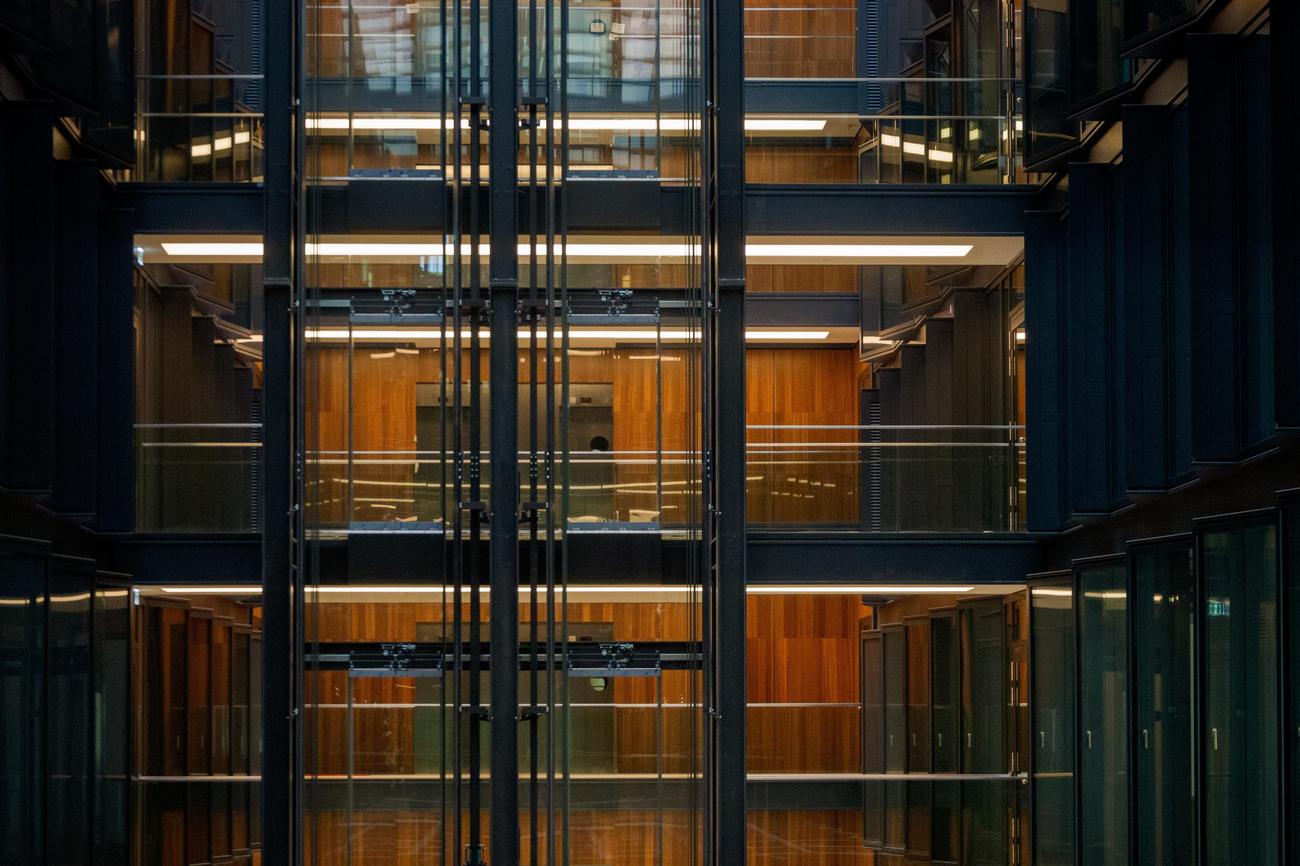Imagine riding an elevator and feeling completely safe, knowing that every possible measure has been taken to ensure your well-being. While most of us simply step into an elevator without giving it a second thought, there exists a fascinating world of lesser-known facts about elevator safety features that often go unnoticed. As a highly experienced and knowledgeable safety consultant with a deep expertise in vertical transportation systems, I am here to unveil these hidden truths and shed light on the intricate mechanisms that safeguard our lives every time we step into an elevator.

Lesser-Known Facts About Elevator Safety Features
Elevators are an integral part of our daily lives, safely transporting millions of people each day. While we often take their reliability for granted, it’s important to recognize the intricate safety measures that make this mode of transportation so secure. In this article, we will uncover some lesser-known facts about elevator safety features that deserve our attention. So let’s dive in and explore the hidden truths that keep us safe in elevators.
Safety is a top priority in elevator design and operation
When it comes to elevators, safety is of paramount importance. Elevator manufacturers invest significant resources to ensure their products adhere to rigorous safety standards. From the initial design phase to the installation process, safety features are carefully integrated into every aspect of elevator construction. These lesser-known facts highlight the common safety features found in modern elevators and emphasize the industry’s dedication to passenger well-being.
Overspeed governors: The silent guardians against freefall
Have you ever wondered what prevents elevators from plummeting to the ground in the event of a malfunction? The answer lies in an often overlooked safety feature called an overspeed governor. This device monitors the elevator’s speed and activates the brakes if it exceeds a predetermined limit. Essentially, the overspeed governor acts as a silent guardian, ensuring that you can rely on your elevator even in extreme situations. Remember, lesser-known safety features like the overspeed governor work tirelessly behind the scenes to keep you safe and sound.
Overload sensors: Preventing elevator strain
Elevators are designed to handle a certain weight capacity. Exceeding this limit not only compromises passenger safety but also strains the elevator’s components. To prevent accidents caused by overloading, modern elevators are equipped with overload sensors. These sensors detect excess weight and trigger alarms or prevent the elevator from operating until the load is reduced. By acknowledging the significance of overload sensors, we can actively contribute to elevator safety and prevent potential mishaps. The inclusion of overload sensors highlights the constant evolution of elevator safety features in response to real-world challenges.
The evolving ASME A17.3 Safety Code for Existing Elevators and Escalators
The safety of older elevators often raises concerns due to their lack of modern safety features. However, it’s important to note that the ASME A17.3 Safety Code for Existing Elevators and Escalators exists to establish minimum requirements for safety in these pre-existing systems. While it may not encompass the full extent of modern safety features, it ensures a baseline level of rider safety. This code sets a crucial precedent to protect passengers, highlighting the industry’s commitment to continuous improvement and safer elevator operation.
Elevators: A safer ride than you may think
Contrary to popular belief, elevators are statistically one of the safest modes of transportation. In fact, they are twenty times safer than escalators and significantly safer than traveling by car. Elevator accidents are rare, and the industry’s dedication to safety through comprehensive maintenance and regular inspections ensures their reliability. By recognizing the safety record of elevators, we can alleviate any unwarranted fears and gain a deeper appreciation for the robust safety features they possess.
Elevator safety: Yours to control
While elevator safety features are designed to minimize risks, it’s crucial for users to play an active role in maintaining a safe environment. Following some simple guidelines can further enhance passenger safety and contribute to problem-free elevator rides. By being mindful of our actions, we can collectively create a safer elevator experience for everyone.
Conclusion
Elevators are an impressive feat of engineering, meticulously designed to transport us to our destinations efficiently and securely. By uncovering these lesser-known facts about elevator safety features, we gain a newfound appreciation for the advancements made in this industry. Remember, elevators are more than just a means of transportation; they are a testament to the ongoing commitment to public safety. So the next time you step into an elevator, take a moment to acknowledge the hidden truths that surround you and enjoy your safe journey.
If you’re curious about the fascinating world of elevator installation, we’ve got you covered. Click here to explore some intriguing facts about elevator installers. You won’t believe the incredible skills and knowledge these professionals possess. Discover the secrets behind this intricate trade and gain a whole new appreciation for the elevators we use every day. Don’t miss out on these captivating insights into the world of elevator installation. Find out more at ../interesting-facts-about-elevator-installer.

FAQ
Question 1
What are some lesser-known facts about elevator safety features?
Answer 1
– Elevators are statistically the safest way to travel and are twenty times safer than escalators.
– Modern elevators are equipped with safety features such as overspeed governors and overload sensors.
– Pre-existing elevators may lack the safety features introduced in the past 20 years, but the ASME A17.3 Safety Code for Existing Elevators and Escalators contains basic requirements for rider safety.
– Each type of elevator has its own set of safety features, including brake systems and hoistway door interlocks.
– Elevator manufacturers design and build elevators with safety features to ensure safe usage and operation.
Question 2
What is the significance of regular inspections and maintenance for elevator safety?
Answer 2
Regular inspections and maintenance are important for elevator safety because:
– Elevators should be inspected and maintained regularly to ensure the functionality of safety features.
– Modern elevator systems adhere to stringent safety standards and contain a wide variety of safety features.
– Identifying and addressing any safety vulnerabilities requires the expertise of experienced professionals.
– Regular maintenance helps prevent breakdowns and ensures the smooth operation of elevators, reducing the risk of accidents.
Question 3
Are elevators safer than cars?
Answer 3
Yes, riding in an elevator is actually safer than riding in a car. Elevators are statistically proven to be a safe mode of transportation, and they have numerous safety features in place to ensure passenger well-being. However, it is still important to follow simple guidelines, such as not overloading the elevator and being cautious when entering or exiting, to further improve passenger safety.
Question 4
What safety standards exist for elevator structures and operation?
Answer 4
Modern elevator systems adhere to strict safety standards. Some of the safety standards and regulations include:
– ASME A17.3 Safety Code for Existing Elevators and Escalators: Contains basic requirements for rider safety in pre-existing elevators.
– Engineering codes and standards set by organizations such as the American Society of Mechanical Engineers (ASME) and the National Elevator Industry, Inc. (NEII).
– Building codes and regulations that govern the installation, maintenance, and operation of elevators, such as the International Building Code (IBC) and local jurisdiction regulations.
Question 5
Who invented the elevator?
Answer 5
The elevator was invented by Elisha Graves Otis in 1853. Otis’ invention revolutionized vertical transportation, leading to safer and more efficient movement within buildings. Today, Otis Elevator Company is one of the world’s leading manufacturers of elevators and escalators.
- Jesus Bible: Discover Jesus’s Story Throughout Scripture - April 27, 2025
- Don Luis: Unraveling the 16th-Century Virginia Mystery - April 27, 2025
- Captain J’s Kauai Tours: Unforgettable Na Pali Coast Adventures - April 27, 2025
















